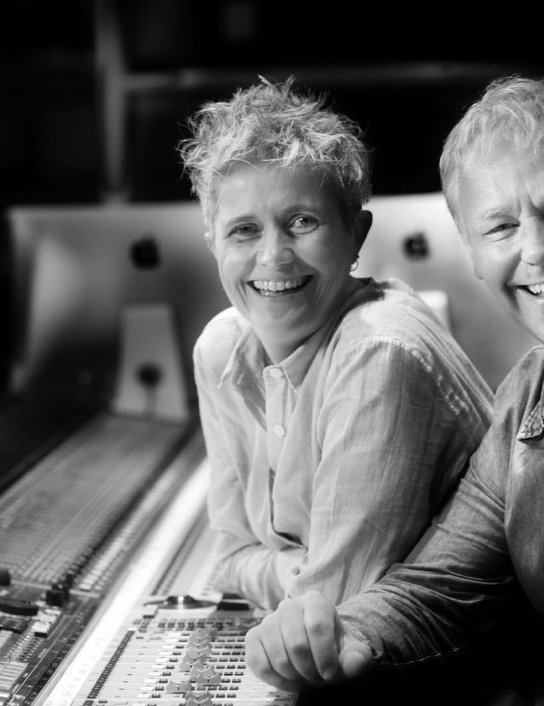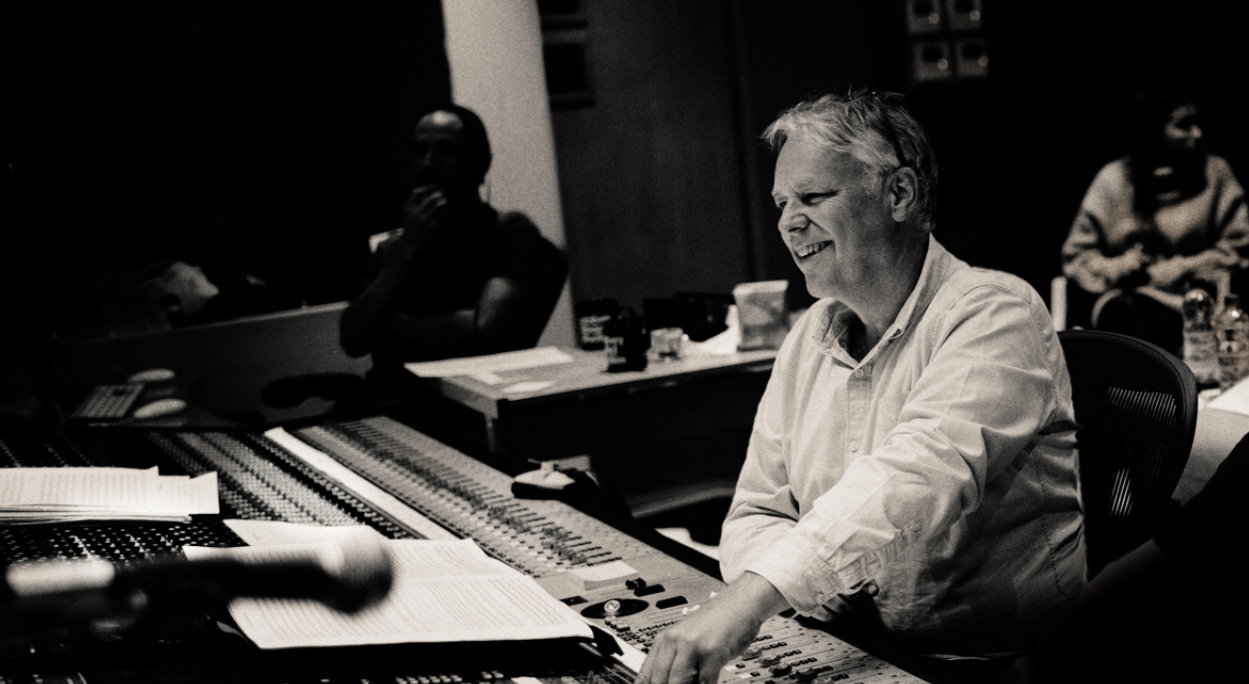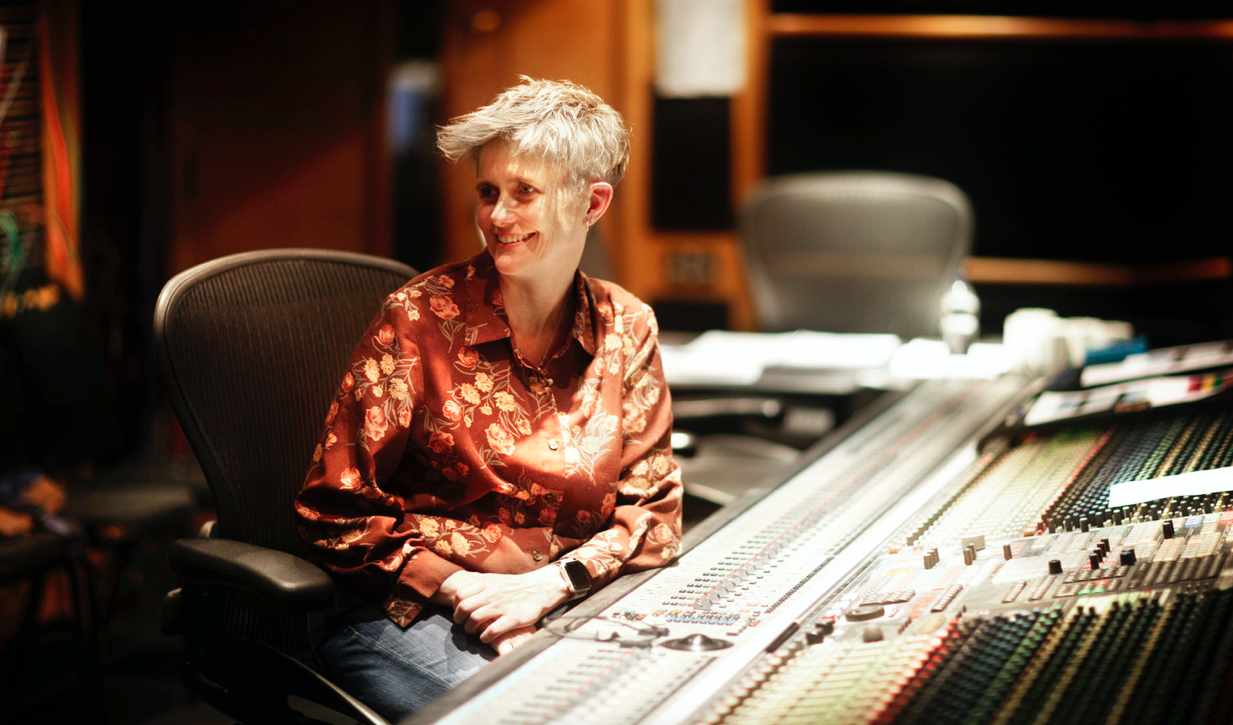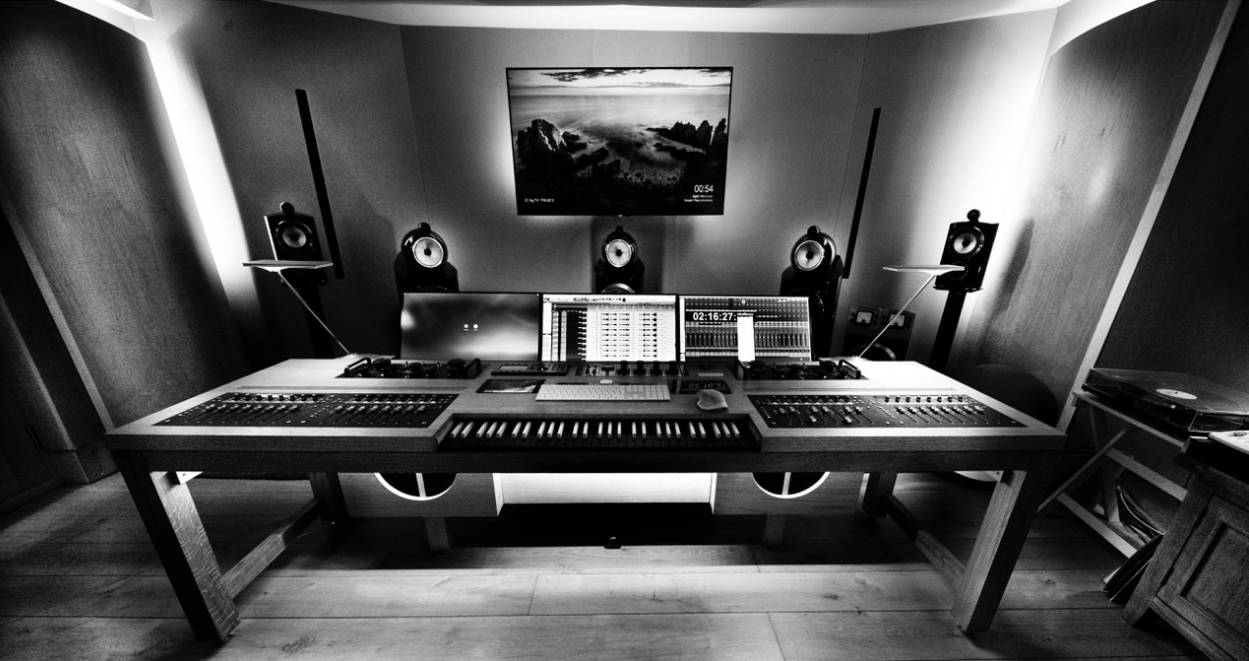ThunderDesk
At the heart of the Sweet Thunder room is its custom-made ‘ThunderDesk’ – the result of a complete rethink about the concept of a mixing desk for today’s engineer.
ThunderDesk is a moving fader production console, an integrated music player, a keyboard instrument and a flexible working surface all rolled into one, and skillfully crafted in beautiful oak. The desk has its own integrated 9.1 speaker system and acts as an independent sound source – no computers are required.
Two built-in touch screens facilitate streaming of music, radio from the internet, or digitally from a laptop, while the desk boasts retractable high resolution displays with video switching for the duo’s multiple ProTools rigs. The desk has valves – 28 in fact, and thanks to two in-built custom levelling valve amplifiers, Such Sweet Thunder have the best of old technology, reimagined for a new way of working.
“It's part of our business model to help create solutions for an ever-changing world,” says Cobbin as he shows Headliner the custom desk. “We did some work on a film for Tim Burton, and I recorded it that day; we were under a lot of pressure at that stage from Disney. They decided to re-record some bits again, but they needed it within a day. I was recording the orchestra at Air Studios in the morning, and I'd upload all the multi tracks to Kirsty, who was here. She started mixing them while I was still recording the choir, so in the final mix, what you're hearing was 90% of what Kirsty had done on the same day.”
“We made a few tweaks and it made it to LA by the time difference,” Whalley smiles, pointing out that they have their own thousand megabit upload. “We can’t have the client waiting for three hours for the files to arrive. The Tim Burton one, for example, is a 7.1, 96k mix with 16 stems!”
Merging Technologies plays a key part to facilitating a smooth workflow: the studio boasts two Merging Anubis compact AD/DA interfaces and six Horus multichannel units – all networked together allowing anything to be connected to anything else, with enough analogue inputs to connect all the legacy pieces of kit – without any hassle.
When initially setting up their Pro Tools system, Whalley and Cobbin wanted the best convertors they could get for their stereo:
“We got tipped off about Horus – which I’d only seen used for classical sessions at that point,” admits Whalley. “We thought it was some kind of classical trickery, you know? We thought that it wouldn’t apply to us in Pro Tools, but this could be great. We bought a quite modest first Horus and we used it to do analogue summing with a beautiful stereo chain.
"We were blown away with it and started using it as inserts within Pro Tools. And while this was great, we never quite got round to working out the best plan until we did a recording in Glasgow for Danny Elfman, where we decided to take up a Pro Tools rig to record, and they had a setup with Horuses on the floor. We took ours, and I was thinking, ‘oh, they'll plug this into here’. And all we ended up doing was joining their network. That was the first time we really saw the power of audio over IP.”
Whalley says that while they were using their own mic amps to boost up their system, it triggered something in their brains:
“We thought that we could do this instead! We have all this lovely analogue equipment, we can pull it into any of our rigs – wherever we want it. It’s a whole new way of mixing for film, really. That's what got us inspired, and gradually we bought another Horus and some more analogue equipment and started to incorporate it into our workflow; we hadn't seen anyone do this before in terms of mixing the analogue equipment for film.”
“It's a major commitment for one small mix room to have six Horuses and two Anubis, because the product is thatgreat,” Cobbin stresses.
“We're not holding back now on the imagination that we can apply to our own kind of mixes, and that's brilliant. The Horus has been pretty significant in challenging what I call ‘the old way’ of working.”
Whichever way they are working, the duo are clearly doing something right; good relationships with their clients ensure that they come back to Such Sweet Thunder time and time again:
“Exactly,” smiles Cobbin. “We've done a lot of the Harry Potter franchise, so we know the director really well, and we’ve had a few meetings to discuss the next one. I think it's fair to say that Hollywood keeps us on our toes; it can be incredibly rewarding and demanding. Although artistically, we also find that sometimes it's the small, independent films that are doing some wonderful things creatively,” he concludes.
Read this article in Headliner's MPG special issue, here.
Words: Alice Gustafson




